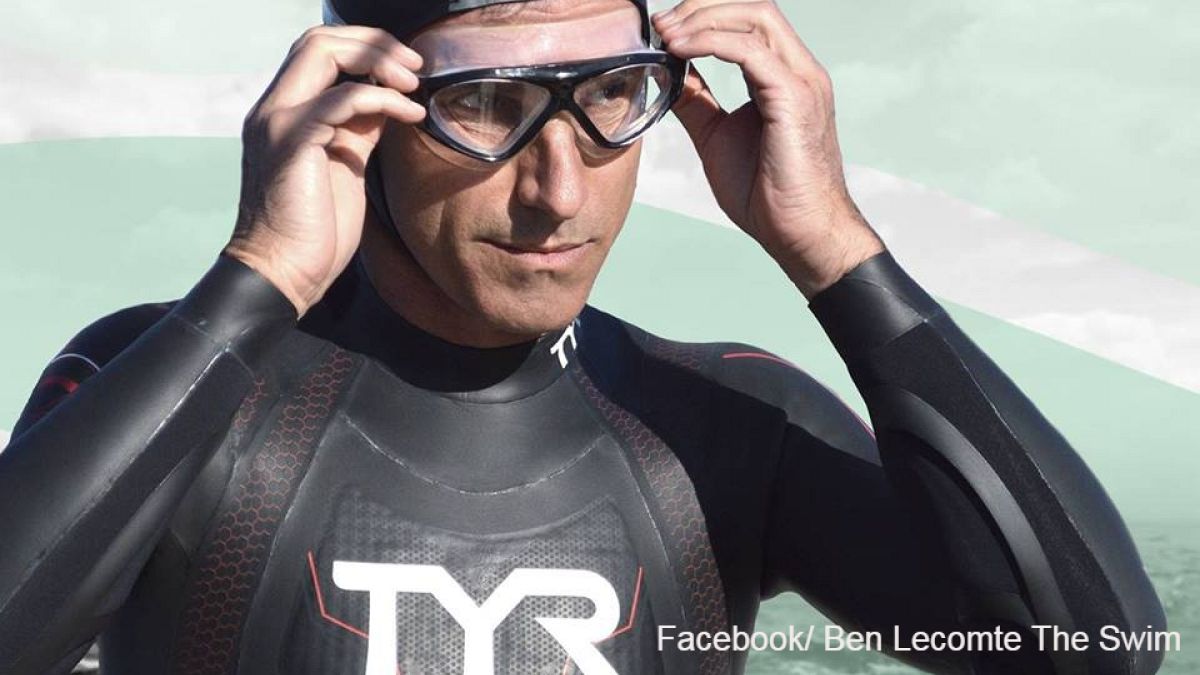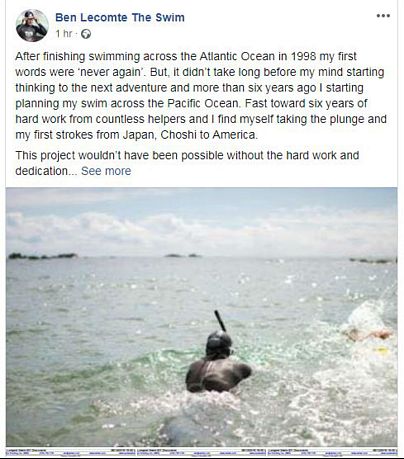Benoit Lecomte aims to swim from Japan to California while researching the effects of plastic pollution clogging the Pacific.
A French swimmer has left a beach in eastern Japan, heading out to sea on a mission to become the first person to swim across the Pacific Ocean — and carry out research on plastic pollution at sea.
Benoit Lecomte aims to reach San Francisco, some 9,000 kilometres away, in six to eight months on a journey combining adventure with scientific experiments.
The 51-year-old, who already swum across the Atlantic Ocean 20 years ago, is accompanied by two boats and a team of eight people.
A crowd of around a few dozen people gathered at the beach in Choshi, a couple of hours from Tokyo, to see the swimmer off. Lecomte, wearing a wetsuit and flippers, drew cheers as he set off doing a brisk crawl. He was joined for the first 100 metres by his 17-year-old daughter and 11-year-old son.
Out at sea were the 20-metre yacht and inflatable boat, which will accompany him across the ocean. The plan is for Lecomte to swim for eight hours each day, and eat and sleep aboard the yacht which has some 2.8 tonnes of food.
Mind over matter
The French architect, who has lived in the United States for over 25 years says, has prepared mentally and physically for the trip for seven years. Ahead lie several months of unpredictable and at times turbulent weather, extremely cold water, not to mention the danger posed by sharks and jellyfish.
“It is mind over matter,” said Lecomte. “To do that day in and day out, to push you and to push your limits, then the mind has to be super strong.”
Much of the research will focus on the build-up in the Pacific of “plastic smog”, containing billions of pieces of microplastic. Scientists are increasingly concerned about its effect on marine ecosystems and entry into the food chain.
Microplastic particles come from large plastic trash that has fragmented into smaller pieces or microbeads in products like soap, body wash and toothpaste.
Ben Lecomte’s journey will take him across the northern part of the “plastic continent”, an accumulation which, according to a recent study, stretches across a surface area three times the size of France.
‘Plastic everywhere’
The scientific publisher Seeker provides much of the swimmer’s backing and will be providing daily updates on his progress. More than two dozen scientific organisations, medical and oceanographic, will benefit from the data gathered during the expedition.
“I remember my father and he was the one who taught me how to swim in the Atlantic. I remember times when we would go to the beach and walk and never see any plastic. Now, everywhere I go, on the beach, I see plastic everywhere,” Lecomte said.
His Atlantic crossing in 1998 was never ratified by Guinness World Records because it could not be verified that he had resumed his swims at the exact point he stopped the previous day.
But Lecomte says that raising awareness about pollution is more important than setting records.
“If we are all aware of it then after it is much easier to take action and to change our behaviour because the solution is in our hands. We know what we have to do.”
The swimmer left Japan on World Environment Day, which this year has seen the United Nations call on people to stop using throwaway plastic products.

